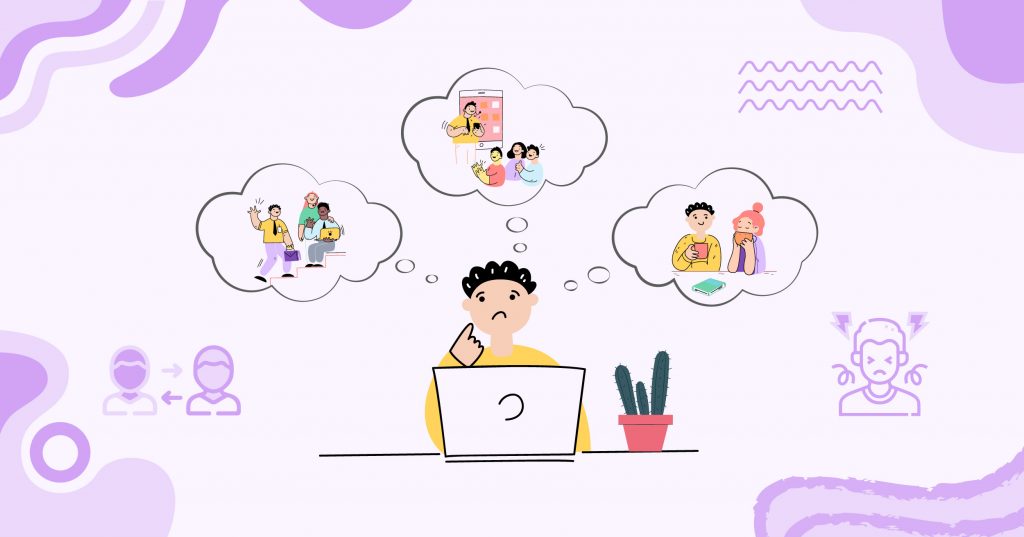It’s never easy to solely handle the responsibility of your child post-separation. You are already dealing with the day-to-day struggles that come after the divorce. And then managing and maintaining the well-being of your child on your own comes with unwanted stress and anxiety, making it even more difficult.
Co-parenting can be the best solution for your child and for you to better handle the tough situations of daily life.
Balancing Post-Separation Parenthood
Co-parenting is a complex, often emotionally charged arrangement where separated or divorced parents work together to raise their children. This situation can create significant struggles in everyday life, involving managing different parenting styles, coordinating schedules, and maintaining open lines of communication—all while dealing with residual emotions from the separation.
Real-life struggles include constant disagreements over rules, discipline, and lifestyle choices. For example, one parent might be more lenient with screen time while the other enforces stricter limits, leading to confusion and frustration for the child.
The impact of these conflicts can ripple through daily life. Parents may feel constantly stressed and overwhelmed, juggling their work, personal lives, and the demands of co-parenting. Children, sensing the tension, might act out or withdraw, further complicating the situation.
Simple tasks like picking up the child from school or deciding on extracurricular activities can become contentious battles, draining the emotional energy of everyone involved.
Subscribe to newsletter
Get your Gut Health Starter Guide right now.
Elevate your Tuesdays with practical, science-backed wisdom propelling you forward on your gut health journey.

The Science of Co-Parenting Success
Despite the challenges, co-parenting offers significant benefits for both children and parents. Research indicates that children thrive with consistent and active involvement from both parents.
This involvement can lead to better emotional stability, meaning children feel more secure and less anxious. It also improves academic performance, as children receive more support and motivation. Additionally, children with engaged parents usually develop healthier social relationships, making friends more easily and interacting better with others.
From a neurological standpoint, having both parents present helps children develop a secure attachment style. This type of strong, healthy emotional bond is crucial for their emotional and psychological development. Secure attachment gives children a solid foundation, allowing them to explore the world confidently and form healthy relationships in the future.
For parents, co-parenting reduces the individual burden of raising a child alone, leading to better mental health and more personal time. Cooperating and compromising with a former partner can also enhance emotional regulation and conflict resolution skills.
This process helps lower stress levels since sharing parenting responsibilities reduces the overwhelming load on a single parent. As per Neurochemical factors, this reduction in stress translates to lower cortisol levels, which is beneficial for overall well-being.
In essence, the science behind co-parenting supports its role in creating a balanced, supportive environment for children and promoting healthier, happier lives for parents after separation.
By working together, parents can ensure their children grow up in a nurturing and stable environment.
Effective Strategies for Harmonious Co-Parenting
- Open Communication: Establish regular check-ins with your co-parent to discuss your child’s needs, upcoming events, and any concerns. Use tools like shared calendars and co-parenting apps to keep track of schedules and essential information. This ensures both parents stay informed and can plan effectively.
- Consistent Rules and Routines: Agree on consistent rules and routines for your child across both households. This consistency helps children feel more secure and reduces confusion and conflict. For instance, maintaining the same bedtime or homework routine in both homes can provide stability.
- Respect Boundaries: Respect each other’s personal space and parenting style. Avoid undermining each other’s authority in front of the child, and address disagreements privately. This fosters a respectful environment and teaches the child the importance of cooperation and respect.
- Focus on the Child’s Well-Being: Keep your child’s best interests at the forefront of your decisions. Encourage a positive relationship between your child and the other parent, and avoid speaking negatively about each other in front of the child. This creates a supportive and loving environment for the child.
- Seek Professional Help: If conflicts persist, consider seeking the help of a mediator or a family therapist. Professional guidance can help resolve issues and improve communication, ensuring that co-parenting remains effective and focused on the child’s well-being.
The Co-Parenting Payoff
Emily and John were a couple who, after their divorce, faced significant challenges in co-parenting their two young children. Initially, their interactions were fraught with tension, and their children began to exhibit signs of stress and anxiety.
Determined to improve the situation for the sake of their children, Emily and John decided to implement a more structured co-parenting approach.
They started by attending a few sessions with a family therapist, who helped them develop better communication strategies. These sessions taught them how to express their concerns constructively and listen to each other without judgment.
They agreed on consistent rules and routines, such as maintaining the same bedtime and homework schedule in both homes, which brought much-needed stability to their children’s lives. They also made a point to show mutual respect, even when they disagreed, by avoiding arguments in front of their children and discussing differences privately.
Over time, the changes were remarkable. Their children became more relaxed and happier, their grades improved, and they started to thrive socially. Emily and John found that the reduced stress from their improved co-parenting relationship positively impacted their well-being.
They were able to build new, fulfilling lives for themselves while maintaining a strong, supportive environment for their children. Emily took up a hobby she had long abandoned, and John found more time to focus on his career, all while ensuring their children’s needs were met.
Co-parenting is undoubtedly challenging, but with the right approach and mindset, it can offer profound benefits for both children and parents. By focusing on effective communication, consistency, and mutual respect, you can navigate the complexities of co-parenting and create a nurturing, stable environment for your children.
As Emily and John’s story illustrates, the effort invested in co-parenting can lead to a happier, healthier family dynamic for everyone involved. If they can turn their strained relationship into a successful co-parenting partnership, other separated parents can, too. With commitment and cooperation, co-parenting can be a fulfilling and rewarding journey.


















